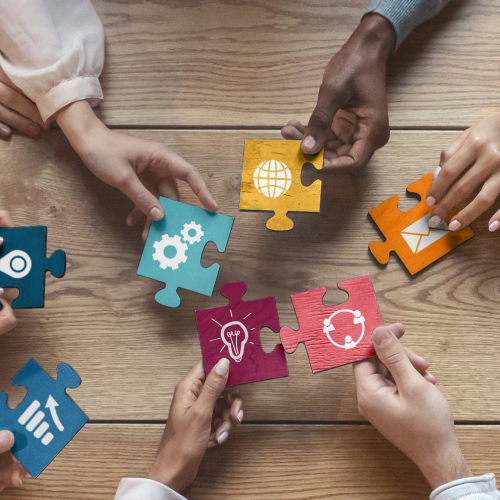Leadership and Organizational Development
Does AI Take the Human Touch Out of Human Services?
Human services professionals are on the frontlines working to support individuals and families across the lifespan with nuance and empathy. That sensitivity and care is critical because the stakes for communities are high—which may also be why some are surprised to hear that artificial intelligence (AI) is being adopted in the human services sector.
Dr. Lauri Goldkind, professor at Fordham University and guest speaker at Social Current’s 2025 CEO Convening, is a social work expert and researcher who has extensively explored AI’s potential to impact human services. Her 2021 article, Social Work and Artificial Intelligence: Into the Matrix, reveals critical considerations for the future of the sector. Learn more from our summary below and access the full text of the article through the Fordham Research Commons.
What Place Does AI Have in Human Services?
The term AI is vague on its own—it’s used to describe several different tools, intended for specific uses, like facial recognition, data analysis, or speech comprehension. Today’s AI tools are not advanced enough to fully replace the work of individual people, rather, AI is a tool that works best when used to enhance—not replace—human expertise.
The implications are huge. This means that professionals and organizations can effect change on a scale not previously possible. As Goldkind articulates in her article, it’s already transformed human services work significantly:
- For Individuals: AI-powered virtual counselors can give mental health support to people who can’t access human therapists. These virtual counselors use facial expressions, body language, and speech to act like humans. Early results show they can help people stay on track with their treatment.
- For Organizations: AI can help social service agencies work smarter. For example, predictive analytics can look at data to figure out which clients need the most help. One food pantry used AI to predict who was at risk of food insecurity, so they could step in before things got worse.
- For Systemic Problems: AI can tackle large-scale issues through data collaboratives—where organizations share data to solve problems. For example, the Chicago Data Collaborative combines data from police, courts, and jails to give a clearer picture of the criminal justice system. This info helps journalists, researchers, and activists push for change.
AI offers a lot of opportunities for the work, but is it too good to be true?
Preventing Potential Harm
While AI has a lot of potential, it also comes with risks. As Goldkind notes, one of the top threats in human services work is individual bias. Even under the best circumstances, professionals may have unconscious biases that affect how they interpret information or make decisions. While AI itself doesn’t have biases, people who create it and the data it uses still reflect real-world inequalities. This naturally raises ethical concerns, especially when AI is used in areas like criminal justice or child welfare.
For this reason, Goldkind believes the best outcomes for AI in these applications start before they are built: “As a values-centered profession with a robust code of ethics, social work is uniquely positioned to engage across disciplines to inform the creation of thoughtful algorithmically enhanced policy and practice at all levels.” Collaboration between tech and human services then becomes a critical symbiosis—providing long-term support to workers and protecting the needs of vulnerable communities.
Read the full-text article online.
CEOs: Learn More From Dr. Goldkind
At this point AI’s place in the industry is cemented, it has filled significant gaps in the system and provides speedy results to cumbersome work—there is no going back. Yet we are only at the beginning of AI’s widespread implementation.
Familiarity with AI is necessary to remain competitive and relevant in today’s work, and future leaders will be expected to understand it well. That’s why we’re excited to have Dr. Goldkind as a guest speaker at Social Current’s 2025 Convening for Chief Executives, where human services CEOs will learn from peers and other experts about the latest innovations in the field. Register now to join us March 19-20 in Charlotte, North Carolina.
Executives and Senior-Level Managers: Learn More at the Executive Leadership Institute
Social Current’s 2025 Executive Leadership Institute, held in partnership with Loyola University Chicago’s Quinlan School of Business, provides foundational leadership training and addresses hot topics, including AI in human services.
Learn more about this year’s program, which includes a weeklong event June 8-12 in Chicago, as well as a year of virtual learning, mentoring, and support with self-designed projects that address organizational challenges.


